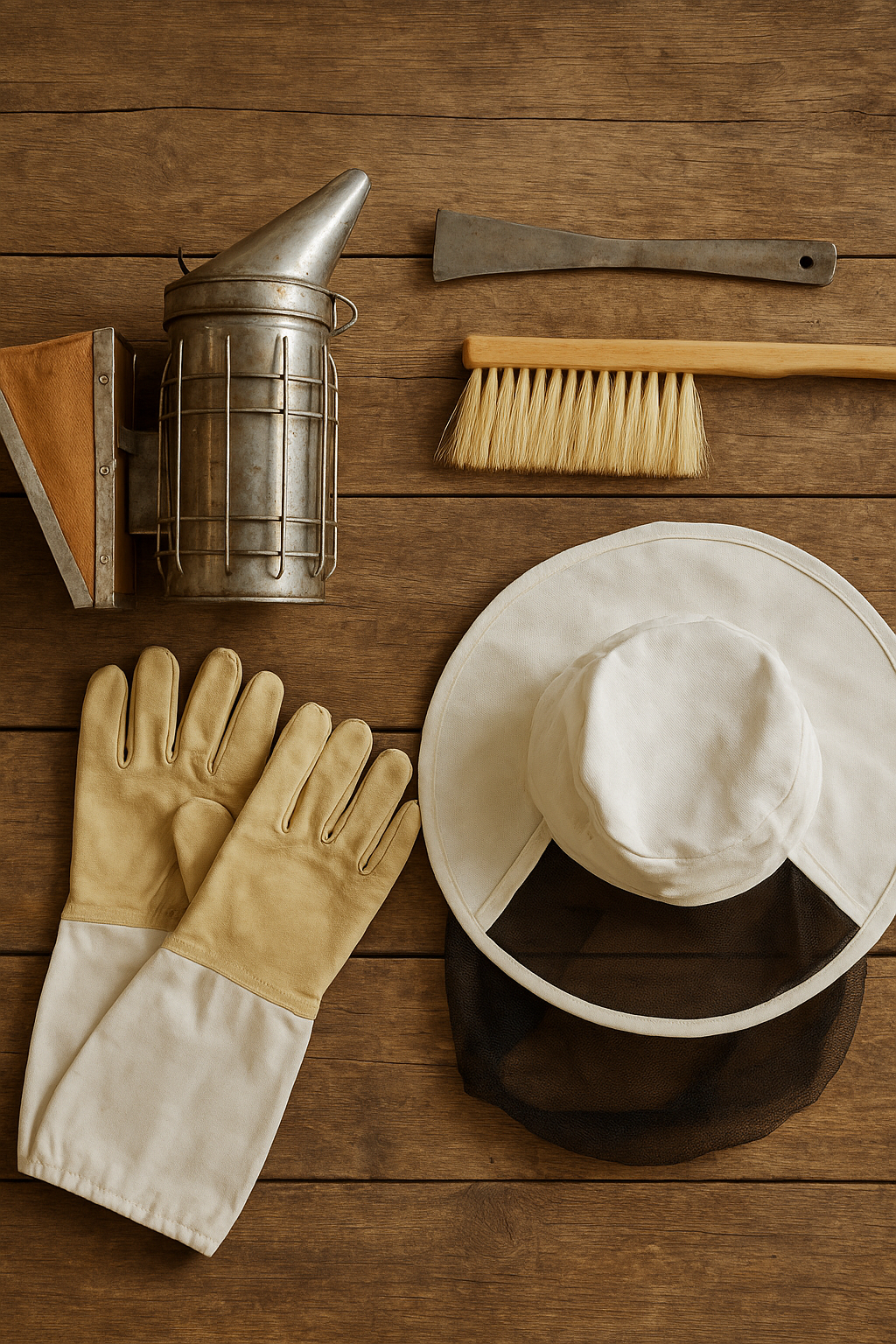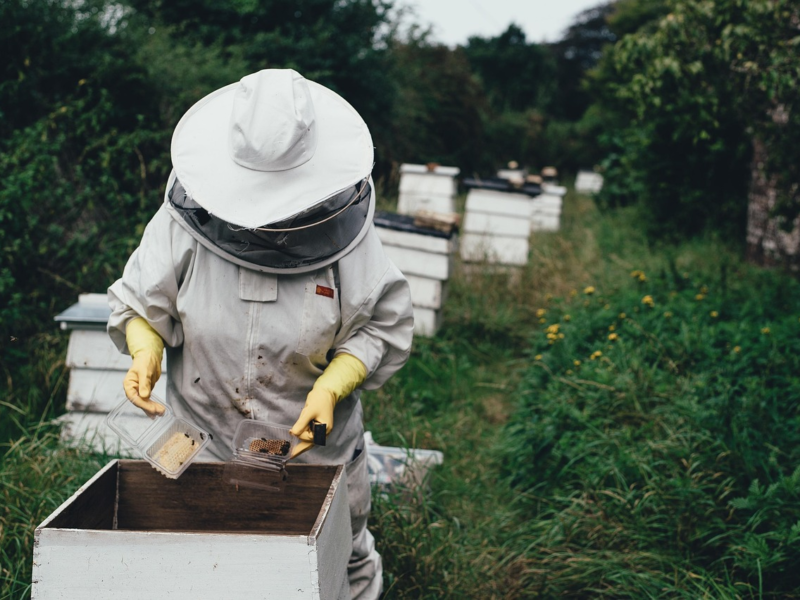Introduction: The Right Tools Make a Better Beekeeper
Beekeeping is a rewarding but also demanding practice. Without the right equipment, working with bees can be stressful and even dangerous—both for the beekeeper and the bees. From protective clothing to specialized hive tools, choosing the correct gear is essential for safety and success.
This guide covers the essential beekeeping equipment for both beginners and advanced beekeepers, with practical advice on how to choose the best tools for your apiary.
Protective Gear: Safety Comes First
1. Bee Suit
- Provides full-body protection from stings
- Usually comes in white or light colors since bees react less aggressively
- Available in cotton suits or ventilated mesh suits for hot climates
Tip: Choose a full-body suit with a zippered veil for maximum protection.
2. Bee Gloves
- Protect hands from stings
- Commonly made from leather, goatskin, or rubber
- Some experienced beekeepers prefer thinner gloves (or no gloves) for better dexterity
3. Bee Veil
- A must-have for protecting the face and neck
- Often comes integrated with a bee suit or as a separate veil worn over a hat
Hive Tools: The Beekeeper’s Essentials
4. Hive Tool
The single most important tool for every beekeeper.
- Used for prying apart frames, scraping propolis, and opening hives
- Available in different designs: standard flat tool or J-hook tool
5. Smoker
- Calms bees by producing cool smoke
- Smoke masks alarm pheromones, making colonies easier to handle
- Works best with natural fuel: dried grass, wood shavings, pine needles
6. Bee Brush
- A soft-bristled brush used to gently remove bees from frames
- Especially useful during honey harvesting when bees must be cleared off combs
Hives: Choosing the Right Home for Your Bees
7. Langstroth Hive (most popular worldwide)
- Modular design with removable frames
- Easy to expand and manage
- The top choice for commercial beekeeping
8. Top-Bar Hive
- Horizontal design without traditional frames
- More natural for bees and easier for hobbyists
- Produces less honey compared to Langstroth hives
9. Warre Hive
- Also called the “People’s Hive”
- Vertical design, mimicking natural cavities
- Favored by natural and organic beekeepers
Honey Harvesting Equipment
10. Honey Extractor
- A centrifugal device that removes honey from combs without damaging them
- Available in manual hand-crank or electric motorized versions
11. Uncapping Knife
- Used to remove the wax cappings from honeycomb before extraction
- Can be a manual cold knife or a heated electric knife
12. Honey Strainer
- Fine mesh filter that removes wax particles, bee parts, and other debris
- Ensures clean, high-quality honey
Optional (But Useful) Equipment
- Frame Grip – clamps onto frames for easier lifting
- Queen Excluder – a grid that keeps the queen out of honey supers
- Bee Feeder – used to feed bees sugar syrup or supplements during dearth periods
How to Choose the Best Beekeeping Equipment
- Beginners should start with the basics: bee suit, gloves, smoker, hive tool, and one Langstroth hive.
- Advanced beekeepers can invest in extractors, electric uncapping knives, and additional tools for efficiency.
- Buy quality equipment – good tools last for years and make beekeeping easier.
- Support local suppliers – often fresher, better-built, and more affordable than mass-produced gear.
FAQs About Beekeeping Equipment
Q1: What is the minimum equipment needed to start beekeeping?
👉 A bee suit, gloves, smoker, hive tool, and a hive.
Q2: Do beginners need a honey extractor right away?
👉 No, beginners can use shared extractors in local beekeeping clubs before investing in their own.
Q3: What’s the difference between Langstroth and Top-Bar hives?
👉 Langstroth hives are more productive and widely used, while Top-Bar hives are simpler and more natural.
Q4: Is an electric uncapping knife necessary?
👉 Not for beginners—a manual knife works fine. Electric knives save time for larger operations.
Q5: How much does basic beekeeping equipment cost?
👉 A starter kit typically ranges from $200 to $400 depending on quality and number of hives.
Conclusion: Equip Yourself for Success
The right equipment is the foundation of successful beekeeping. With the essentials in place, beginners can safely start their journey, while experienced beekeepers can expand with advanced tools for greater efficiency and honey production.
👉 Whether you’re just starting out or running a full-scale apiary, investing in quality equipment means healthier bees, safer work, and sweeter rewards.



